Category: General
Operation Uplift and Serve
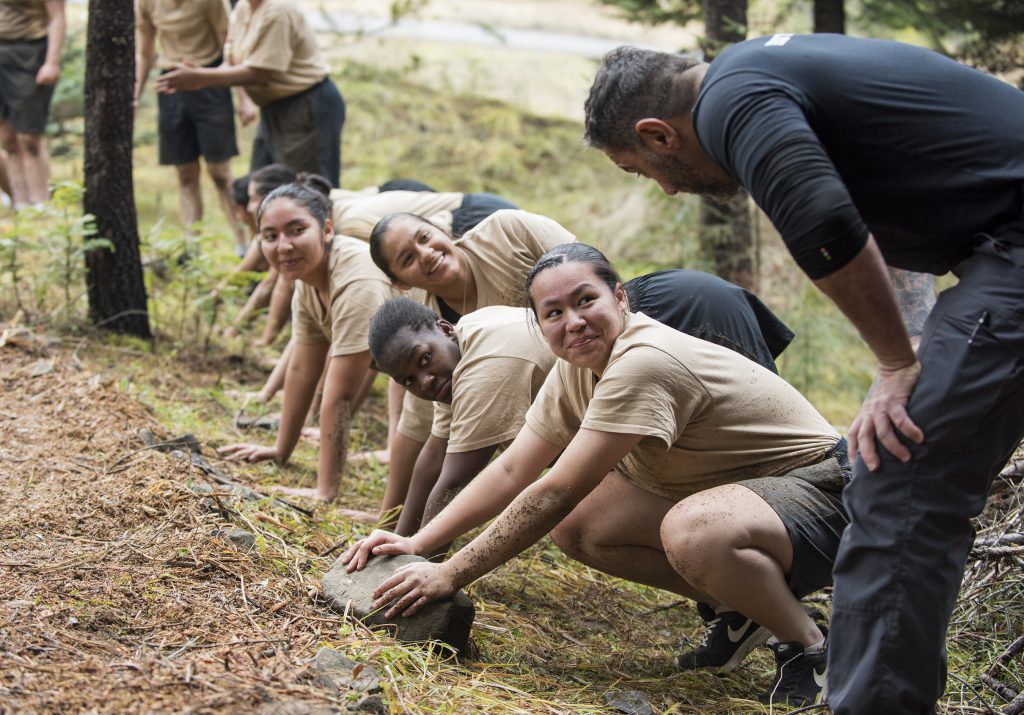
Businessmen Troy McClain and Bedros Keuilian support Idaho’s Youth ChalleNGe Academy with a big surprise
By Master Sgt. Becky Vanshur
PIERCE, Idaho – One of Idaho’s well-known reality TV show stars and businessman Troy McClain, joined forces with international businessman Bedros Keuilian who is widely known for his influential fitness brands as well as one of the largest health franchise entrepreneurs in the world today. Now, the Idaho National Guard knows him for his act of kindness on Nov. 6 by donating thousands of dollars’ worth of gym equipment to the Idaho Youth ChalleNGe Academy.
McClain focuses on making positive changes in the lives of children around the globe. Today, he honed in locally to show his support to the Idaho Youth ChalleNGe Academy. Inspired by the Adjutant General of Idaho Maj. Gen. Michael Garshak’s passion for giving back to the IDYCA, McClain joined the cause. The IDYCA is a Department of Defense and IDNG collaborative program designed to give second chances to Idaho’s youth who are 16 to 18 years old, and who have either dropped out of high school or are at risk of doing so.
A month earlier, the IDNG invited McClain to visit the IDYCA. Garshak spoke passionately about his commitment to the Idaho program and his commitment to the cadets. During the visit, McClain asked both the students and faculty the question, “If you could have one thing to help support this program, what would that be?” He then repeated the same question to leadership of the IDNG.
McClain said he was awed by each response. In each answer they all simply asked to make the program better for the cadets who follow their footsteps. The cadets collectively identified the need for better fitness equipment; the faculty and staff requested more inspirational and motivational leaders who could engage with the cadets; and the IDNG leadership wanted more exposure for the IDYCA so the public can learn more about this program.
“Armed with my answers and inspired by the thoughtfulness for others I could only identify one single person who would be able to achieve all these requests in one,” said McClain. “I immediately called my good friend and businessman Bedros Keuilian. In such a time of crisis, I knew getting gym equipment; access to motivational speakers; and covering delivery costs would to be limited. I also knew the best way to get ahead is to give back and I absolutely knew Keuilian was the man to call. When I call on friends for help, I vow to ensure it wont be for myself and it will be for a cause that aligns with their values and propose in life.”
Keuilian was an immediate yes for donating the gym equipment and giving his time to visit the academy, and to meet and inspire the cadets. The equipment donated consists of new balance balls, battle ropes, box jumps, jump ropes, kettlebells, medicine balls, pull-up stations and weight-lifting sandbags. To top it all off, McClain and Keuilian created a team of motivated representatives and flew them to Pierce to spend the day with the cadets. Former Navy SEAL, CIA contractor and TV actor Ray “Cash” Care, and U.S. Marine Steve Eckert, were brought along to visit the cadets and instruct a special workout session designed to prove to the cadets that they can endure and overcome difficult challenges. By the end of the workout, each cadet successfully completed the rigorous tasks provided by Care and Eckert.
The IDYCA is administered by the Department of Defense and is a cooperative program between the Idaho Military Division and the National Guard’s Youth ChalleNGe Program. The academy provides students the potential to earn up to a year’s worth of credits, to graduate from the program with a high school diploma or GED, or return to their respective high schools to graduate with their class.
For motivation, the cadets participated in an extremely challenging obstacle course to build resiliency and Keuilian delivered an inspirational speech about what he endured in his life to get to where he is today.
“I didn’t even make it through high school. What makes me think I could make it through college?” said Keuilian. “How could I own a fitness franchise and a software company? Because I have heart. I am driven and because I know my purpose.”
More than 30 U.S. states currently have a similar cooperative program. Idaho’s program has helped reshape the lives of more than 1,200 Idaho teens since welcoming its first class in January 2014. Each class is a 22-week program and is offered twice a year.
“The Idaho Youth ChalleNGe Academy’s mission to reclaim the lives of Idaho’s at-risk youth is one of my top priorities,” said Garshak. “The Idaho National Guard is so grateful that these amazing people were willing to donate their time and talent today to help our cadets realize their full potential.”
Idaho Senior Enlisted Leader does more than horse around
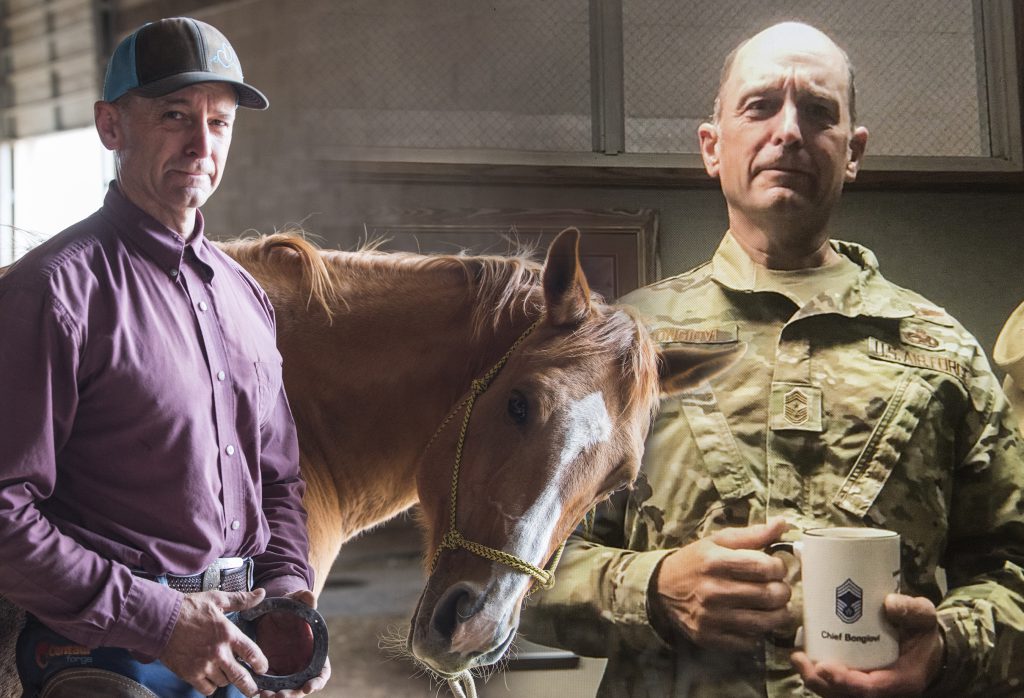
Chief Master Sgt. Harold Bongiovi sees a lot of similarities between working with horses and working with the Soldiers and Airmen he oversees as the Idaho National Guard’s senior enlisted leader.
Bongiovi spends his days around horses. He grew up around them. He trains a few, but most of his time is spent working as a farrier, someone who specializes in horseshoeing. Because every horse’s hoof is different, each shoe must be pre-made or shaped to that specific horse, similar to the personalities of each Soldier and Airman.
“Horsemanship skills are similar to leadership skills,” he said. “The language is different, but it’s the same theory. Horses look for leadership capabilities from the people they are around just like people do. They just speak a different language. They respond to good quality leadership and they resent hard-handed leadership, just like people.”
Bongiovi spends at least one day a week and one weekend a month working alongside Maj. Gen. Michael Garshak, adjutant general of Idaho and the commander of the Idaho National Guard. Bongiovi credits the balance he finds between his military and civilian careers with prolonging both.
“Over the years, I’ve liked being able to do something different,” he said. “The opportunities I’ve had in the military sure beat shoeing horses six days a week, 52 weeks a year.”
Bongiovi estimates that the weekly break has added another four or five years to his horseshoeing career, which began on his grandfather’s farm. Bongiovi grew up there and his grandfather always had horses.
“I had the bug when I was a kid and there’s no cure,” he said.
When Bongiovi was 16, he needed someone to shoe one of his horses but couldn’t find anyone to do it so he decided to figure it out himself. His neighbors asked him to shoe their horses. Then their neighbors told their neighbors they knew someone who could shoe horses. By 17, Bongiovi realized he could make money shoeing horses.
Bongiovi joined the United States Air Force in 1985 to go to college. However, he realized he wasn’t able to attend classes due to his travel schedule as a KC-135 crew chief. After four years, he got out of the Air Force and moved back to Idaho without intending to continue his military career.
In 1989, he joined the Idaho Air National Guard’s 124th Fighter Wing.
“I started thinking, ‘I have all this experience, maybe I shouldn’t let it go to waste.’”
He was hired into a full-time position shortly after but in 1996, his part-time horseshoeing business started to take off so he decided to become a part-time Guardsman.
Bongiovi said he wouldn’t have gotten to travel as much as he has without the National Guard experience. In addition, he said being a traditional Guardsman keeps him fresh because he’s able to take a break from a problem and approach it again with a fresh set of eyes.
Bongiovi was appointed as the state enlisted leader in 2017 and is the second Airman to hold the position. As the state’s senior enlisted member, he communicates directly to the state’s commanding general on behalf of the Idaho National Guard’s enlisted members.
He also helps interpret policy from the National Guard Bureau for implementation across the Idaho National Guard, while also keeping the adjutant general apprised of current issues affecting enlisted personnel.
Cyber warriors train alongside key state partners
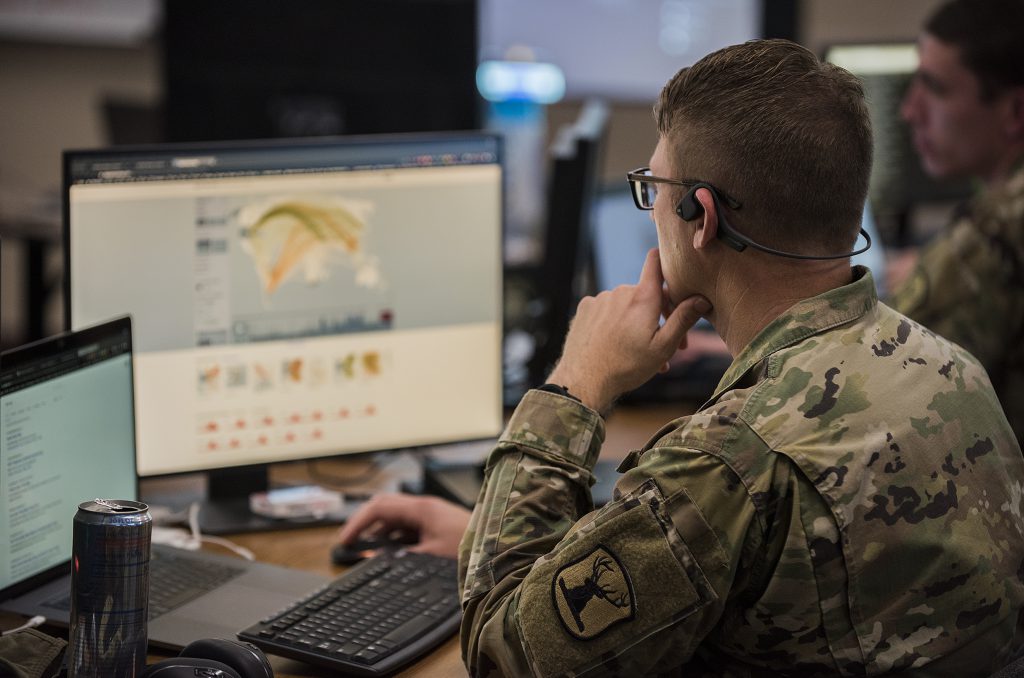
More than a dozen Idaho Army National Guard Soldiers participated in the National Guard’s Cyber Shield 20 exercise Sept 12-27. Members of Idaho’s Defense Cyber Operations Element were among nearly 600 Soldiers from more than 40 states who participated in the two-week training event.
The defensively focused tactical annual cyber exercise was hosted virtually this year and gave Idaho Soldiers the chance to develop and use their cyber defense skills while building key relationships with the state’s Office of Information Technology Services, its mission partner, during the exercise.
“We ensure the state understands our capabilities and that if called upon, we can respond within the legal bounds of cyber defense,” said Col. Dan Lister, IDARNG Chief Information Officer.
During the exercise, each team worked with a mission partner representing an industry partner. Teams assessed networks for vulnerabilities and assisted in recovery operations after a cyber incident.
“It sharpens the skills of our cyber-warriors, who hone their skills throughout the year and the come here ready to lock and load on their weapon systems, their computers,” said Maj. Eric Burgan, the team’s deputy team chief.
Teams spent the first week of the exercise training on cyber threat analysis, systems analysis, information control systems and information operations. The second week tested Soldiers’ skills while conducting cyber incident response and network defense operations.
In previous years, the exercise focused on a weeklong scenario held in person at a central location, but with teams spread out across the country to accommodate Covid-19 safety restrictions, exercises focused on two vignettes per day, which were designed to test specific skill sets.
Burgan said training alongside the state’s IT office allows the team to build trust at the top level that extends to Idaho’s local cities and counties. Across the nation, National Guard DCOEs work with public partners to asses vulnerabilities and help protect public networks.
Idaho’s DCOE stood up in 2016 with the intent to train with community partners and respond to any cyber emergencies within the state, similar to other emergency missions the Idaho National Guard performs.
Back to Newsroom
JOIN the Idaho Army National Guard
Idaho National Guard Soldier spent 309 days as a prisoner of war
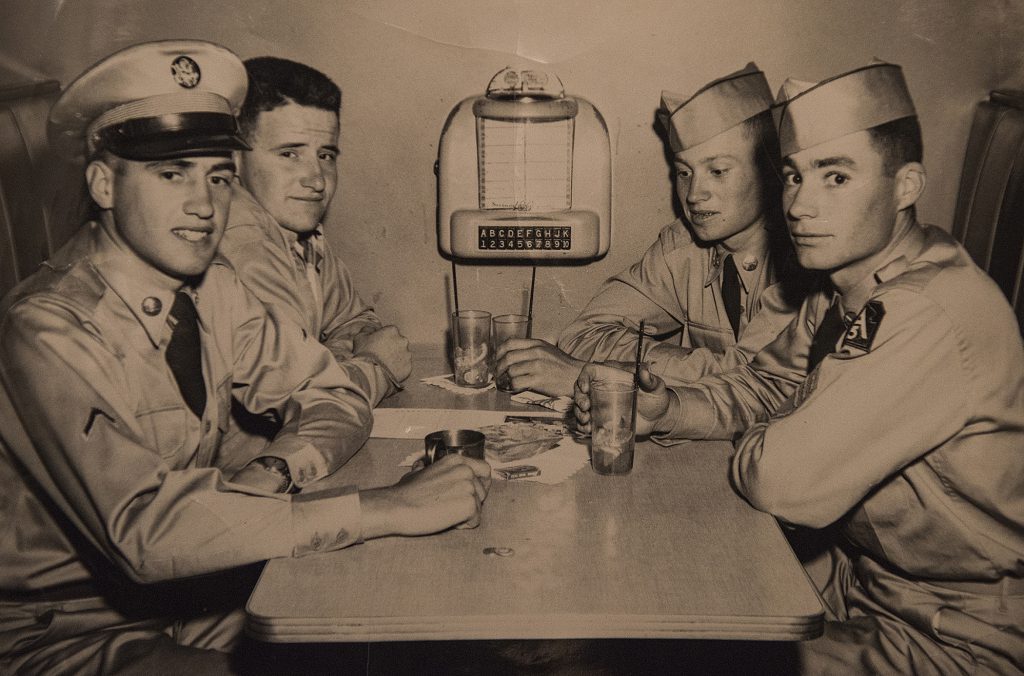
Capt. Robert Taylor
Idaho National Guard
Ray Servatius has a lot to think about at night. Mostly he thinks about that day in Korea when his plane was shot down. The pilot was likely dead before the plane hit the ground. Another Soldier was killed trying to reach him. He spent the next 309 days as a prisoner of war.
“What if I had stayed in that plane 20 more seconds?” he said. “I’d be like the pilot. What if I had jumped earlier? What if my gun had ammo in it? I have a lot of thoughts like that.”
Despite those questions, Servatius said he’s lived a pretty normal life since returning home to Clarkston, Washington, in 1953, shortly after the Korean Armistice Agreement was signed.
“I met this nice lady from Lewiston and married her,” he said. “We had three kids and had a pretty normal life after that.”
“WHERE MY FRIENDS WERE”
Servatius was 19 when he enlisted into the Idaho Army National Guard’s 1st of the 148th Field Artillery Regiment in 1949. The unit, now located in Eastern Idaho, was located in Northern Idaho at the time and Servatius lived in Clarkston, just miles across the Idaho border.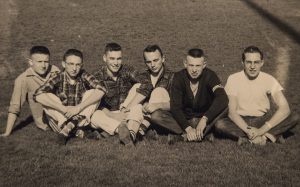 “That’s where my friends were,” he said of joining an Idaho National Guard unit despite living in Washington.
“That’s where my friends were,” he said of joining an Idaho National Guard unit despite living in Washington.
It was also the unit his younger brother, Fred, enlisted in just before the unit deployed.
The 1-148th Field Artillery was activated in May 1951 and sent to Camp Carson, Colorado, for training.
The Idaho National Guard’s 116th Engineer Battalion, the 190th Fighter Squadron and the 25th Army Band also activated during the conflict. Only the engineers would deploy to Korea as a unit. Soldiers from the 1-148th were broken up and sent to units already in Korea. Half of the unit remained stateside.
Servatius attended a fire direction school and additional leadership training before being sent to Korea. After all that training, he said he was happy to be heading to Korea in April 1952 and that he was anxious to get going.
“Young kid’s foolishness,” he says, looking back nearly seven decades later.
Servatius, 22, was a sergeant assigned to a field artillery unit in the 7th Army as the head of a survey section. He said there wasn’t much for him to do since the battalion was in a permanent position and didn’t move the three months he was there.
In July, the Air Force asked for volunteers to fly as aerial observers. He was the only Soldier from the 7th Army selected.
“I don’t know if that was dumb luck or poor luck,” he said.
IN THE SKY
As an aerial observer, Servatius flew with the 6147th Tactical Air Command. He would fly with an Air Force pilot in a T-6 Texan, a single-engine plane used primarily for training new pilots.
Servatius’ job was to sit in the back seat and observe targets for fighter planes or bombers. A command post would give the crew a target. The crew would fly to the location, observe it, report what it could see to other pilots and mark targets for bombing using smoke. After a bombing run, Servatius and the pilot assigned to fly the T-6 would fly back over the target to assess for damage and determine if additional bombs were needed.
Servatius flew 60 missions between July and Oct. 24, 1952. On Oct. 23, he completed a mission with Capt. Wilbur Darby. The flight began in the afternoon but by the time the pair completed their mission, it was too foggy for Darby to return to base and instead were directed to spend the night at a different base.
Darby, a B-24 pilot during World War II, had earned the Distinguished Flying Cross after sinking a Japanese freighter he encountered on a lone mission. He was from New Jersey and was married with three daughters between the ages of five and eight.
On Oct. 24, the pair left the airbase to complete their second mission together. Upon mission completion, Servatius said Darby realized he left his pistol at the base where they had stayed the night before. The pair returned to retrieve it and shortly after were assigned a third mission together. It would be 48 years before Darby’s family would learn the details of their final flight.
CRASH LANDING
The mission was to observe Chinese artillery positions for four F-86 Sabres. Darby and Servatius located the target and directed the fighter jets to it. As they were circling the target to assess for damage, anti-aircraft fire hit the plane.
“It sounded like a .22 bullet going through a tin can,” Servatius said.
Servatius then called over the radio that the plane had been hit. Darby did not respond.
The plane then started to burn. Once again, Servatius called out for Darby over the plane’s intercom. Darby still did not respond.
Servatius then released his seat belt, opened the plane’s canopy, stood up and jumped.
Servatius said his parachute barely had time to open before he landed. He immediately realized he had landed on the Chinese side of “No Man’s Land.” He took off the bright blue flight suit he wore over his Army fatigues and noticed his left leg was broken and his right leg wasn’t much better. He isn’t sure if he hit his legs on the plane’s canopy or its tail once he ejected.
He could see his plane on fire and hear artillery bursting all around him. Servatius said he later learned from an Army buddy the artillery was dropped to keep nearby Chinese soldiers away from him. Another Soldier watched his plane crash from an outpost. Four days later, that Soldier, Sgt. Fred Servatius, learned he had watched his brother’s plane get shot down.
After a few minutes, Servatius heard a helicopter coming and thought it was his ride back to base. He watched them land near his plane and pick up Darby’s body. Then the helicopter left.
“THEY WOULD HAVE KILLED ME”
Servatius then started crawling towards the plane. He quickly ran into Sgt. 1st Class Charles Whitaker.
In 2002, Servatius learned Whitaker was in charge of a patrol and saw Servatius’ plane go down. He had been the one to call the helicopter to retrieve Darby. He also saw Servatius’ blue flight suit and assumed it was Servatius’ body. He was on his way to retrieve Servatius’ body when the two met.
Servatius said Whitaker told him Chinese soldiers were nearby and to get his .45 pistol out. As he cocked his weapon, he realized the magazine was missing. He believes it likely fell out when he ejected and hit his legs on the plane.
Chinese soldiers then ambushed the two. Servatius saw Whitaker get hit and never saw him again. Because Servatius’ pistol was empty, he couldn’t fire back at the enemy. After Whitaker was shot, they quickly took Servatius prisoner.
“If I had had ammo and shot back, they would have killed me,” he said.
Whitaker was killed during the firefight. He was 27. His body was found next to the plane’s wreckage a few days later.
PRISONER OF WAR
Servatius was unable to walk due to his broken leg so he was ordered to crawl up a steep hill. He was taken into a cave filled with Chinese soldiers where one of them tied a board to his leg. At dark, Servatius said he was carried on a stretcher by four Chinese soldiers all night. The next day, they stopped at a house where he was interrogated and forced to stay awake all day. At nightfall, he was moved to a POW holding place.
Servatius remembers being held in a hole dug in the side of a hill with a log roof and a front wall made of four small logs with a wooden door. The makeshift prison held 10 American Soldiers and eight South Korean soldiers with just enough room for everyone to lay down if they all laid on their sides. Servatius said there was only a small hole in the front and that it was dark most of the time.
The POWs ate rice twice a day. There wasn’t any water for hygiene and lice and other sanitary issues were prevalent. Soldiers used a single can for a latrine. Each Soldier was given one blanket, which Servatius said was never cleaned and was his only source of heat as temperatures regularly dropped below zero.
After two months, Servatius said he was moved to a POW camp. By then, his leg had healed enough to stand on. The trip took several days and Servatius said it was cold and he suffered frostbite on his toes during the trip.
Servatius was taken to what was known as Prison Camp Number 3 on the Yalu River. He said he could see into China across the river. The camp had approximately 200 soldiers from multiple countries. Servatius said the living conditions were better than his previous location. They were confined to Korean houses but had to sleep on hard floors. Food was varied but consisted mainly of rice. Soldiers dug trenches around the compound and hauled firewood in from nearby trees during the day. A creak provided Soldiers with water to wash and stay clean.
Soldiers were also given communist pamphlets and interrogated regulary. Servatius said interrogation efforts were mianly focused on younger or undereducated Soldiers in an attempt to get those Soldiers to defect. No one in the camp defected.
In February 1953, both sides exchanged sick and wounded prisoners. One released Soldier, Pvt. Walker, called Servatius’ parents when he reached the States. It was the first update they received on their son’s whereabouts and conditions since being notified he was captured.
On July 27, the Korean Armistice Agreement was signed, bringing an end to the Korean conflict. The POWs had no way of knowing what was happening outside their camp. However, Servatius said the local area normally remained dark after 10 p.m. but that night he could several lanterns burning bright throughout the area. A Chinese officer notified the Soldiers that a peace treaty had been signed and that they would be going home.
The Soldiers remained in the camp another three weeks. Red Cross care packages provided Soldiers with basic necessities during that time. Soldiers were transported across Korea in trucks and Servatius said locals threw rocks and other objects at them in every town. The trip ended with a four-day train ride and then the POWs waited another six days to be released, crossing over a bridge at Imingak over the Imjin River.
HEADING HOME
Servatius was released on Aug. 29, 1953, 309 days after he was captured. He weighed 135 pounds, 45 pounds less than before his capture.
Servatius and other POWs took the USS General W.M. Black to San Francisco.
“They said we’d go home first-class,” he said. “What that meant was that there was a man to every other bunk in the ship instead of every bunk.”
Servatius was diagnosed with tuberculosis in his lungs and left shoulder. He was expected to recover in Seattle but was assigned to a hospital in Spokane to be closer to his home. Once in Spokane, he took a bus to Clarkston, arriving close to midnight. A friend with a taxi cab gave him a free ride to his parents’ house. That night he slept in the back of a family car because his parents had gone to Seattle to meet him there.
LIFE AT HOME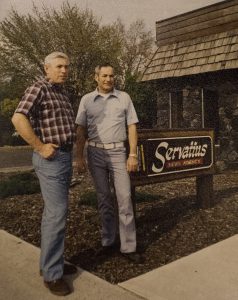 Servatius got out of the Idaho Army National Guard shortly after returning home. He was the only 1-148th Field Artillery Soldier who was a POW in Korea. During the conflict, 7,245 American service members were captured. 2,806 of them died in captivity, 670 escaped and 21 defected. Nearly 40,000 Americans died during the conflict and more than 7,800 remain unaccounted.
Servatius got out of the Idaho Army National Guard shortly after returning home. He was the only 1-148th Field Artillery Soldier who was a POW in Korea. During the conflict, 7,245 American service members were captured. 2,806 of them died in captivity, 670 escaped and 21 defected. Nearly 40,000 Americans died during the conflict and more than 7,800 remain unaccounted.
Servatius returned to the job he had before deploying to Korea, working for a wholesale magazine distributor. Six months later he and Fred bought out the distributor’s owner when he was ready to retire and ran Servatius News Agency together until 1998. Fred passed away in 2015 at the age of 82. Servatius married his wife, Carol, in 1954. The two remain married and have three adult children. He turned 90 earlier this month.
Servatius married his wife, Carol, in 1954. The two remain married and have three adult children. He turned 90 earlier this month.
In 2000, Darby’s family learned about his final flight when an officer with the Rutgers University Air Force ROTC program contacted Servatius looking for any information he could remember about Darby.
Servatius recalled flying with a different pilot almost every flight. He had been unable to remember the pilot’s name on his final mission and wasn’t sure who to contact to find out. He told the officer everything he could remember about Darby’s final days.
That officer conveyed his story to Darby’s wife and three children. His family knew he had been shot down and killed in action, but they knew very few other details. His daughters named their children after their father, passing on Darby as either a first or middle name in his honor.
In 2002 the ROTC program dedicated a Korean War monument in memory of Darby and the program’s Air Force ROTC’s honor society is named after him. Darby graduated from Rutgers in 1940.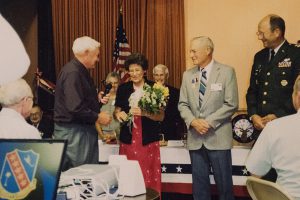 In 2003, the Clarkson City Council proclaimed Sept. 19 as Ray Servatius Day to mark the 50th anniversary of the battalion’s deployment and reunion.
In 2003, the Clarkson City Council proclaimed Sept. 19 as Ray Servatius Day to mark the 50th anniversary of the battalion’s deployment and reunion.
During the reunion, Maj. Gen. John Kane presented Servatius with the Purple Heart and Prisoner of War Medal, neither of which he had previously received. Kane served as the adjutant general of Idaho from 1995 – 2005.
Idaho National Guard’s 266th Range Squadron deploys to the U.K.
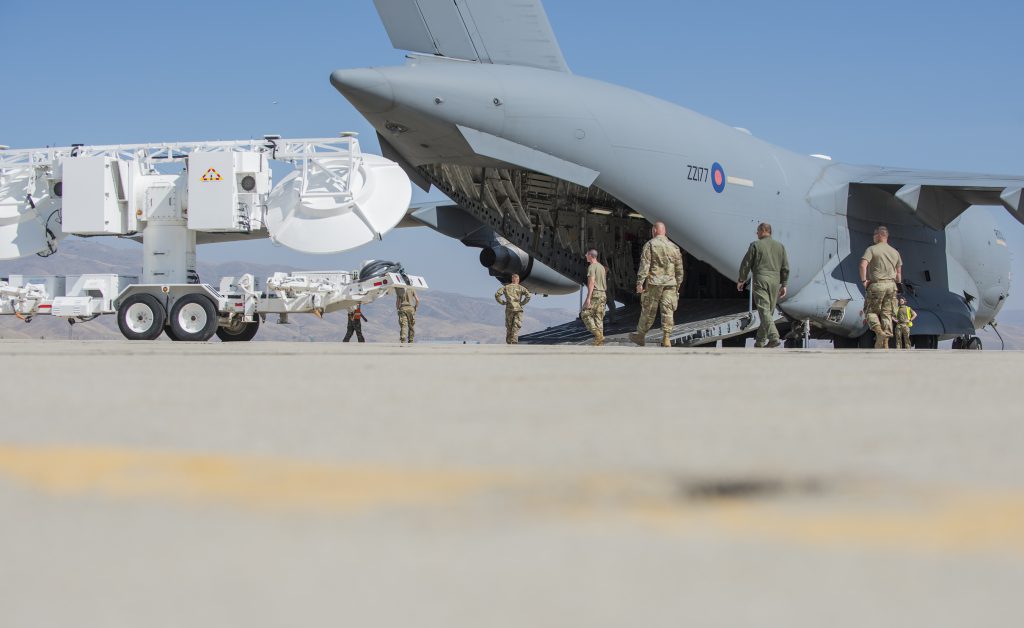
Several Airmen from the Idaho Air National Guard’s 266th Range Squadron and their specialized Joint Threat Emitter equipment deployed this week to Scotland, United Kingdom, after being specifically requested by the No. 11 Group Royal Air Force to support them in numerous joint exercises for the next couple months during the unit’s Carrier Strike Group deployment.
“This is just another example of the capability and flexibility of today’s Idaho National Guard Airmen,” said Brig. Gen. Tim Donnellan, commander, Idaho Air National Guard. “The expertise of what these Airmen are able to provide with their knowledge of the emitter equipment is directly in line with our National Defense Strategy in preparing for future conflicts, and truly shows their commitment and professionalism.”
Idaho’s 226th RANS possesses highly sought-after electronic warfare training capabilities due to the specialized Threat Emitter Units. The IDANG sent two four-person teams with two Joint Threat Emitters to the U.K. on Royal Air Force C-17 Globemaster transport aircraft.
“We are one of the only military units that has the Joint Threat Emitter equipment,” said Tech. Sgt. Phillip Mason from the 266th RANS. “We have the most experience operating and maintaining this equipment, therefore, we get a lot of requests to bring the emitters to a number of exercises around the world.”
The equipment emits radar signals, acting as opposing forces, to pilots flying aircraft in the sky above. The equipment provides scenarios in which pilots can react to threats they may face in real-world situations.
“That’s what makes this training great for pilots,“ said Mason. “In the real-world they will be able to recognize that signal after training with this equipment and avoid being shot down.”
This training will help U.K. pilots achieve high-end collective training objectives during the Carrier Strike Group exercises. Additionally, U.S. Marine Corps ground troops are participating in the deployment and will provide a joint capability training opportunity.
“I am incredibly proud to serve with the Airmen of the IDANG,” said Donnellan. “They always answer the call, even if takes them near the top of the world to Scotland, our Airmen are ready to go. It’s humbling and awe inspiring.”
39 former Marine Reservists enlist into the Idaho Army National Guard
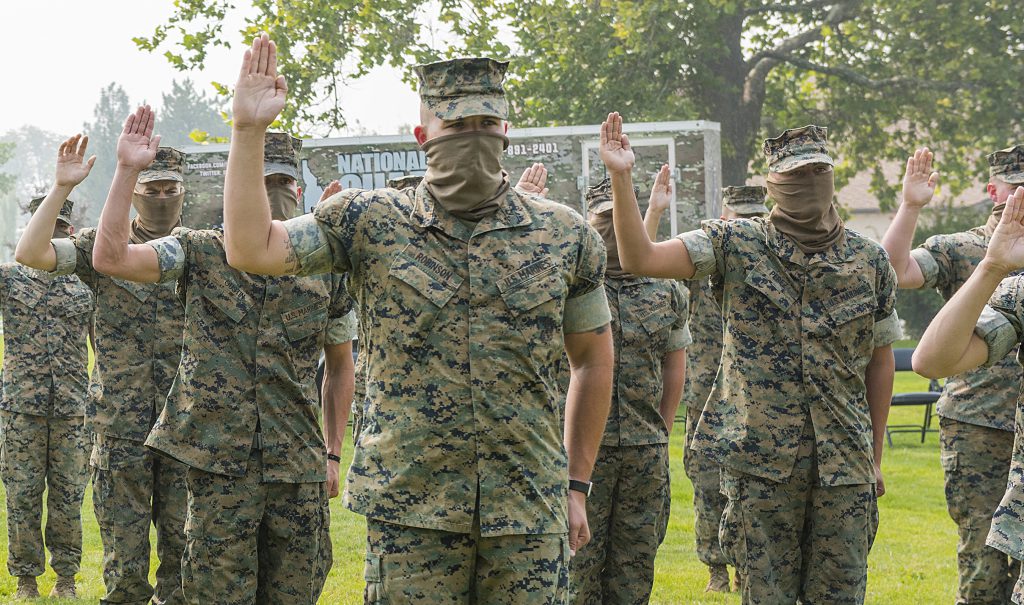
Today, more than three dozen former Marine Reservists enlisted into the Idaho Army National Guard. Idaho’s newest Citizen-Soldiers all served in Company C, 4th Tank Battalion, which was deactivated in August as the Marines look to divest its armor battalions.
“Marines make excellent Soldiers,” Brig. Gen. Farin Schwartz, commander of the Idaho Army National Guard said. “They each have the potential to make an immediate impact to their new unit and have already proven to be successful in the military.”
New recruits can take six to eighteen months to train before they can reach their assigned unit and once there, must continue to train and learn their new job before they can fully contribute to their unit’s mission. Most of the Marines who transferred into the National Guard will have similar positions when possible, Schwartz said.
Marine 1st Sgt. Craig Wilcox said more than a third of the company’s Marines transferred into the Idaho Army National Guard for one of two reasons: to continue to serve their country locally or to continue to work on or in tanks. Company C operated the M1A1 Abrams Main Battle Tank while the 116th Brigade Combat Team of the Idaho Army National Guard operates the updated M1A2 Sep v.
“I looked at all of my options and I knew I wanted to stay in Idaho because my family is here,” said Staff Sgt. Kyle Dycus, one of the Marines who transitioned into the Idaho Army National Guard. “Initially, I wanted to stay within the tank community but decided to look for a more real-world option for my future and I chose the information technology field. I am looking at this from a positive aspect and I am thankful for this new opportunity. Change can often be a good thing.”
The majority of the Marines who enlisted into the Idaho Army National Guard are tankers, maintainers and other support individuals.
“We tried to match their Marine skill sets to an Army military occupational specialty as much as possible,” Schwartz said. “And we’ll continue to pay them special attention for the foreseeable future to ensure their transition is as smooth as possible.”
Wilcox said Marine Reservists were given the option of transferring to a new job and unit in the Marine Reserve, to transfer to a new branch or join the Individual Ready Reserve. An additional 10 Marines joined National Guard units in other states.
The number of Marines to transition into the Idaho Army National Guard increases the total strength of the organization by more than a percent.
In 2019 the Marines began divesting its tanks and reducing its artillery cannon battalions to focus on developing light mobility options to get around island chains with the assistance of unmanned systems and mobile anti-ship missiles. The efforts are part of Marine Corps Commandant Gen. David Berger’s plan to modernize the corps to become a lighter and faster force.
The Marines also plan to reduce its number of infantry battalions from 24 to 21, artillery cannon batteries from 21 to five and amphibious vehicle companies from six to four.
Locally, Wilcox said that a small number of Marines will remain on Gowen Field to maintain the Marines’ connection to the Treasure Valley until a decision is made regarding future units being assigned to Gowen Field. In the meantime, Marines will continue to engage in community relations events, host their annual Toys for Tots program and conduct funerals and honors for Idaho’s Marine veterans.
Back to Newsroom
JOIN the Idaho Army National Guard
Idaho National Guard assists California with wildland fires
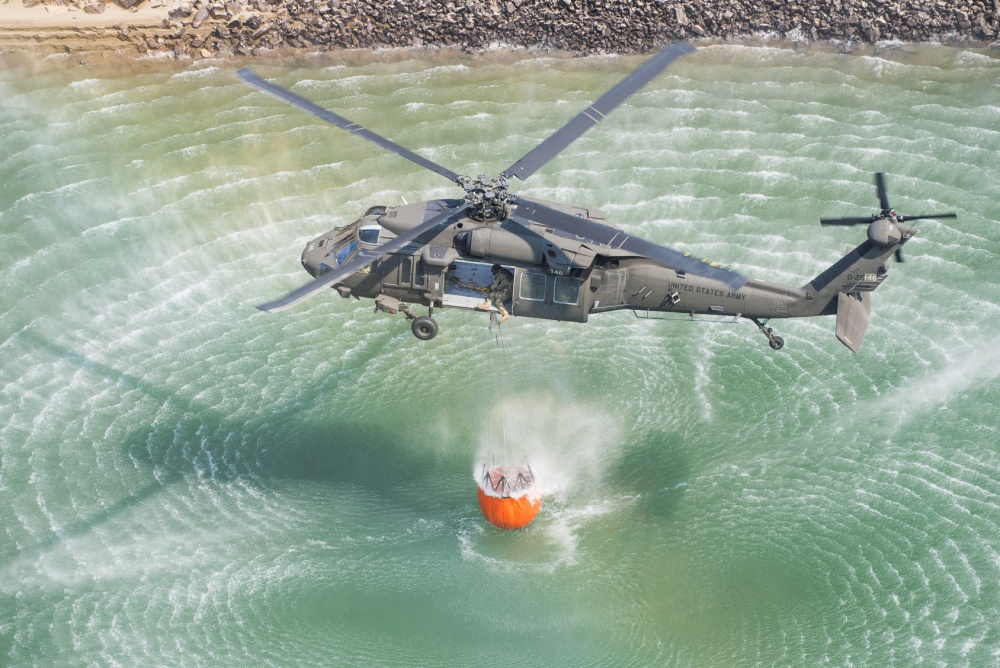
The Idaho National Guard sent three UH-60 Black Hawk helicopters and nearly two-dozen personnel on Aug. 27 to assist in battling the California wildfires. Earlier in the week, the Idaho Army National Guard Aviation Group trained on the specialized bucket equipment unique to helicopters and designed specifically for aerial firefighting.
“California is currently requesting six Type-1 Firefighting Aircraft and we’re one of the only units currently available to fulfill that request,” said Col. Christopher Burt, Idaho Army National Guard state aviation officer. “We are trained, ready and eager to help our neighbors in California.”
The team from Idaho includes pilots and crew chiefs who make up the flight crews, along with essential maintenance and support personnel, as well as two flight paramedics augmenting California National Guard UH-60 MEDEVAC crews. They will work in cooperation with several other states as they battle the massive fires that have already consumed more than 1 million acres across the Golden State.
“Our UH-60s are three of nearly 80 civilian and military aircraft from around the nation supporting this crisis response,” said Capt. Eric Fitzpatrick, officer in charge of Idaho’s team. “Civilian aircraft are the primary effort but they have reached capacity so this is where the National Guard comes in: to help fellow citizens in need, whether back home in Idaho or around the country.”
While Idaho Army Aviation provides this support to the citizens of California, the Idaho National Guard as a whole continues to maintain its readiness to respond to fires, or any other emergencies here in Idaho, if called upon.
Idaho National Guard responds to three search and rescues
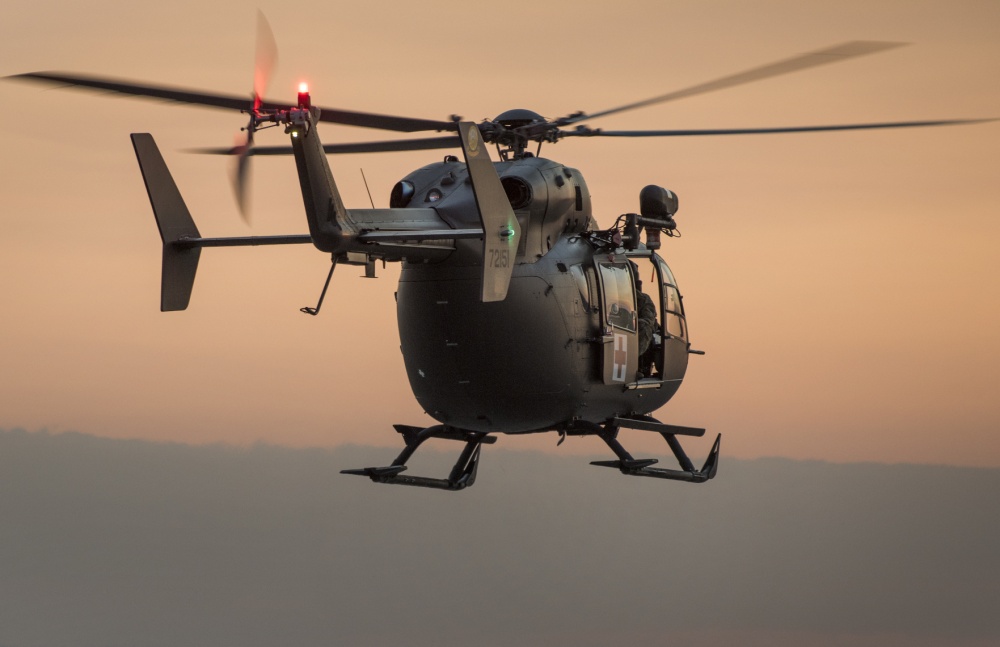
Article courtesy KIVI Channel 6
BOISE, Idaho — The Idaho National Guard has the capability to fly either their Black Hawk or Lakota helicopters into the Idaho backcountry for search and rescues.
On Thursday morning, a team responded to a remote area in the Idaho City area after a person riding an ATV crashed, the other two rescues from the past week included hikers.
The Idaho National Guard used a hoist recovery and flew these three people out of the backcountry to receive the medical care they needed.
“We don’t get the information too much on the why’s or the how’s, we get the approval to go and we are always willing to go help,” said Army National Guard pilot Nathan Spaulding. “It is really rewarding.”
A rescue begins with authorities in rural Idaho calling for extraction, then if crews are available, they start planning out the logistics.
“Location is an important one because we got to get to the right spot and sometimes that can be a challenge,” said Army National Guard pilot Mitchell Watson. “We want to know things like elevation, temperature, how many are injured, and the nature of their injuries.”
While communicating with ground crews, the two pilots assess the situation, in these rescues, the hoist operator lowered the medic down to the injured person.
“Then the medic will typically package the patient, put them in some type of litter,” said Watson. They will call us back then we will hoist out the patient and the medic.”
This four-person crew relies on training to hone their skills to ensure a successful mission in some of the most challenging terrain in Idaho.
“We are making a difference, and that’s why I think I like it,” said Watson.
Impact summer: High school student spends summer at basic training, preparing for future
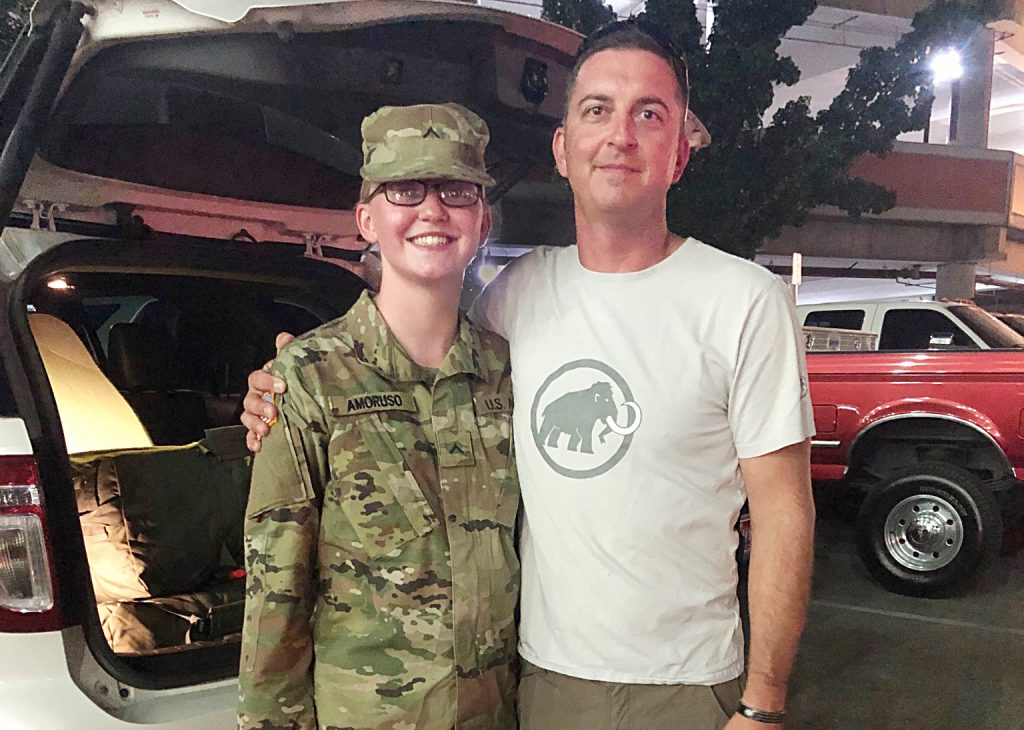
Capt. Robert J. Taylor
Idaho Army National Guard
Idaho Army National Guard Pvt. Ashlynn Amoruso grew up wanting to be a surgeon. Over the summer, she took a big step toward accomplishing that goal by completing basic combat training at Fort Jackson, South Carolina.
“I asked my friends, ‘what did you do this summer?’ and they said they didn’t do much because of Covid-19,” she said. “I did a lot of things I never expected I’d do.”
Amoruso enlisted into the Idaho Army National Guard in December and is still 17. She’ll start her senior year of high school today and continue both her military and civilian education after graduating in May.
“Being in the National Guard is really cool,” Amoruso said. “I don’t think I’d want to go active duty. My dad’s in the National Guard and has done a lot of things, and I thought that was really cool.”
Like her father, 1st Sgt. Dan Amoruso, Pvt. Amoruso will serve as a 68W combat medic. She said she’s always been fascinated with being either a trauma or neurosurgeon after reading books and watching videos about doctors while growing up. She plans to earn her EMT certificate during the school year, which will reduce the length of time she’ll need to spend at Fort Sam Houston in San Antonio, Texas, training to become a medic.
Amoruso plans to start college at Boise State University after she graduates high school and completes Advanced Individual Training. As a member of the Idaho National Guard, she’ll be eligible for both Federal Tuition Assistance and the State Assistance Tuition Program. Each program will provide up to $4,000 a year in tuition and/or fees. Boise State currently charges $2,766.18 a semester in tuition and an additional $1,263.82 in fees. She is also eligible to use the GI Bill to help cover living expenses while in college, in addition to her monthly drill paycheck.
“I’m proud that my daughter joined the Idaho Army National Guard,” said First Sgt. Amoruso. “I think she saw the positive things the National Guard has done for our family as she grew up, and that influenced her decision to enlist.”
Basic training was Pvt. Amoruso‘s first time visiting somewhere on the East Coast. She enlisted as part of the National Guard’s Split Training Option, which allowed her to attend basic training between her junior and senior years of high school. She’ll attend Advanced Individual Training after she graduates high school.
“It taught me a lot about dealing with other people,” she said. “I met people from all over the U.S. and interacting with them was different than interacting with people here in Idaho.”
During basic training, she repelled from a 40-foot wall, spent weeks learning how to fire the M4 rifle, and learned the basics of being a Soldier, including marching, physical fitness and the Army values. Amoruso said her favorite part was learning to throw a grenade.
“It was super loud and you could feel it,” she said. “You could never pull the pin out with your teeth like they do in the movies.”
Back to Newsroom
JOIN the Idaho Army National Guard
A day in the life of a rescue helicopter pilot
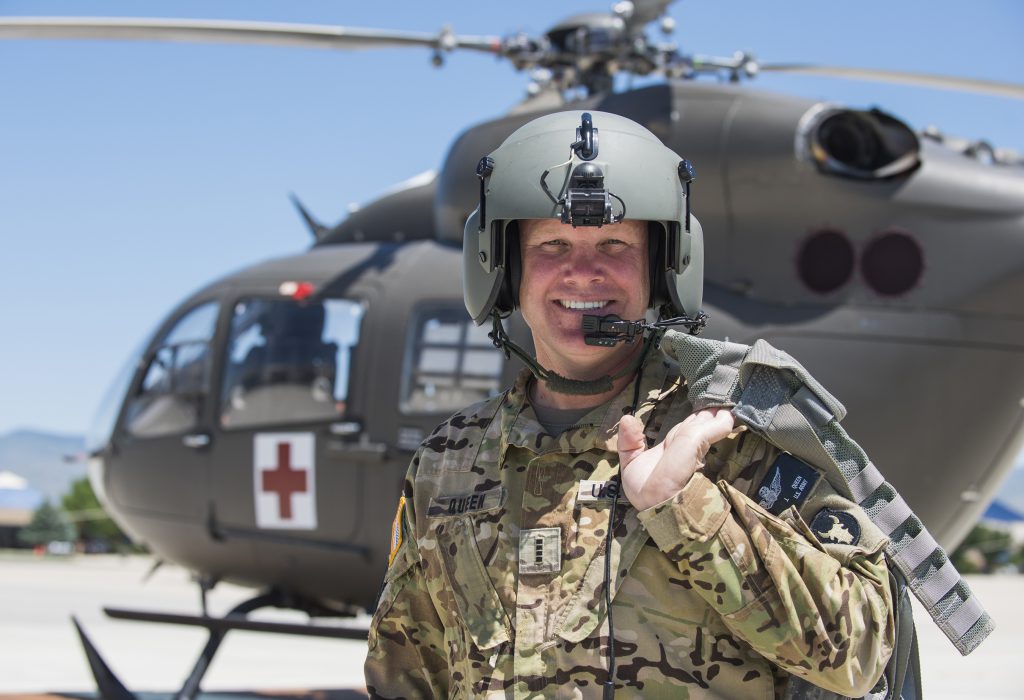
By Master Sgt. Becky Vanshur
Idaho Military Division Public Affairs
Spend a day with Idaho farmer and Guardsman Chief Warrant Officer 4 Chad Queen, one of the Idaho Army National Guard’s rescue helicopter pilots, and feel firsthand what it is like to fly the UH-72 Lakota helicopter and help save lives.
The clunking and puttering sounds of the tractor are too loud and the vibration from the engine on his leg masked the familiar feeling of the phone ringing in his pocket so he missed the call. Not 30 seconds later, his wife is running toward him from the ranch house with a phone in her hand and her arms waving above her, motioning for him to stop, as he is barreling down a row of overgrown hay.
Queen brings the tractor to a halt and idles the engine. He takes the call from his wife’s phone. An Idaho National Guard flight operations officer is on the line. “We have a possible rescue, can you assemble a crew?” A crew consists of the pilot, a crew chief and a paramedic. Today, there are two individuals lost on the South Fork of the Boise River near Elmore County, north of Mountain Home, Idaho.
It is a warm summer day, just after 10:00 a.m. on a Saturday. Queen leaves his tractor in the field and rushes to change out of his dusty farm clothes and into his flight suit. He calls his crew to help, kisses his wife and gets into his car, all within a few minutes. Queen calls the flight operations officer. “We are 30 minutes out.”
“I am always pleased when I can assist with a rescue mission, it is a great way to serve my local community,” said Queen. “With over thirty years in the Army, I have had a lot of assignments, but none so rewarding as this.”
The previous evening three individuals flipped in their raft on the river. One individual was able to pull himself out of the water safely, walking several hours to find a phone around midnight and call for help. He did not see his two friends get out of the river. Air St. Luke’s flew up and down the river throughout the night, unable to find either of the individuals. Elmore County Search and Rescue set up a command center nearby and started the ground search.
As soon as Air St. Luke’s and the Elmore County Search and Rescue realized the lost individuals could be down in a river canyon and unreachable, they requested the Idaho Army National Guard’s UH-72 Lakota helicopter. They called the Air Force Rescue Coordination Center dispatch, located in Florida, for assistance. The AFRCC approved the mission and called the Idaho National Guard flight operations officer.
Idaho’s two UH-72 helicopters belong to the IDARNG Detachment 1, Delta Company, 112th Service and Support Battalion. They have a unique hoist and lift rescue attachment and are strictly used for domestic operations and rescues.
Queen and his crew arrive at Gowen Field, Boise’s Air Terminal and National Guard base, around 10:30 a.m. and begin preparing the helicopter for its flight. Using a preflight checklist, Queen ensures the fuel amount is accurate for the mission with the weight of the crewmembers and the additional approximate weight of the rescued individuals.
The crew chief ensures the aircraft is ready for the mission and Queen gathers the map, the route and coordinates, weather data and any other information needed from a preflight brief with the flight operations officer.
The helicopter is ready and crew are ready. They grab their personal survival bags, helmets and harnesses. Queen is sitting in the cockpit and taxis the helicopter onto the open space of the flight line. He lifts up on the collective and brings the helicopter a few feet above the ground for several seconds, performing a hover check to calculate power requirements with the combined calculations of weight adjustments, weather, altitude and fuel amount.
Queen performs final radio checks and they take off high into the air, heading east away from Gowen Field, toward Mountain Home.
Queen speaks through his headset. “Five minutes out from the location site.” The crew chief attaches his tether to the tether of the hoist. He tugs on it firmly, going through the motions of several series of operational checks on the equipment. The hoist equipment is ready.
Both the crew chief and the paramedic hang out of the helicopter on the ledge of each side, searching the ground below them, their feet resting on the skid platform of the helicopter. The helicopter blades are rotating loudly above them.
They search deep into the gulches near the river. They fly up and down the river, searching in the water and alongside the riverbanks at a low altitude and low air speed.
Two individuals are spotted walking on a dirt road in a narrow canyon area. Queen lands in a nearby opening. The paramedic jumps out of the helicopter and runs to the two individuals. Fortunately, they are the lost individuals and are only suffering from minor injuries and dehydration.
The individuals are rescued without the need for the hoist equipment and first aid is performed on them as they fly back to the command center where ground ambulances and a large excited group of family members and friends are waiting, cheering as the helicopter lands.
It is nearing 1:00 p.m. and Queen flies the helicopter back to Gowen Field. He and his crew feel a release of tension to know they successfully helped in the rescue of the two individuals.
Queen and his crew train for daytime and nighttime scenarios and with different rescue agencies such as fire departments, sheriff offices, forest rangers, wildland firefighters and other first responders.
“The crew can respond to assist with several emergency situations like floods, fires and mountain rescues,” said Queen. “We train with local first responders to assure proficiency for when it counts.”
Queen taxis the helicopter toward the hanger at Gowen Field. He and his crew perform the post flight checklist and debrief, positioning the helicopter in the hanger, preparing it for the next rescue.
Queen drives up his gravel driveway hearing the familiar crisp sound of the rock under his tires. It is late in the afternoon now. He quickly eats a sandwich, changes back into his farm clothes and walks up the already swathed row of hay, toward his tractor. He climbs into his tractor and begins barreling down the row that he had abandoned earlier, feeling the warmth of the hot summer sunlight on his face and a sense of relief from the day’s successful rescue mission.
 Official Government Website
Official Government Website